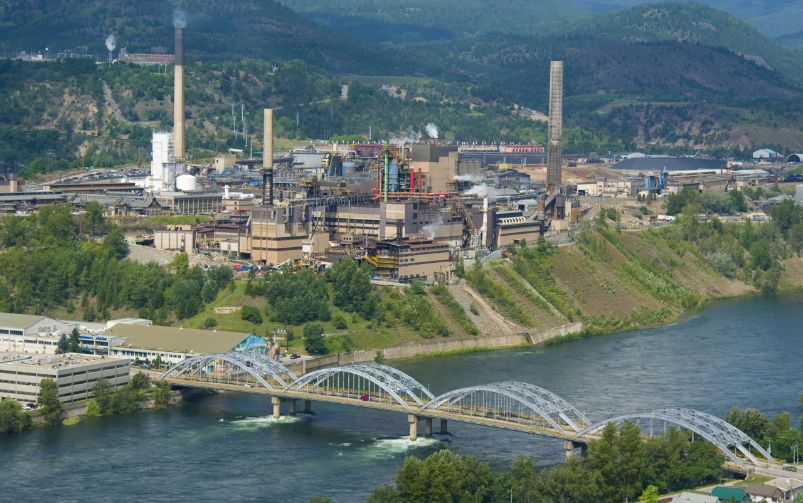Machinery designed to collect polymetallic nodules from the ocean floor has been tested by The Metals Company, but commercial seabed mining in international waters has yet to begin due to the absence of a formal deep-sea mining code. Courtesy of The Metals Company.
Welcome back to your weekly mining news recap, where we catch you up on some of the news you may have missed. This week’s headlines include Canada’s mining sector largely untouched by latest U.S. tariffs, a new record high for gold, and a big drilling program at Musselwhite mine.
Canada’s The Metals Company (TMC) is seeking U.S. government approval to bypass the United Nations’ International Seabed Authority (ISA) to begin deep-sea mining in the international waters of the Pacific Ocean. TMC plans to extract critical minerals from polymetallic nodules located on the ocean floor. Since the ISA has not yet finalized a seabed mining code despite years of effort, TMC is aiming to use a U.S. law to apply for a permit by mid-2025. According to Reuters, the White House is currently considering an executive order that could speed up permitting for deep-sea mining.
Due to the escalating trade war, copper prices dropped dramatically on Friday, to below US$9,000 a ton, a plunge not seen since March 2020, as reported by . The fall comes after China announced it would impose a 34 per cent retaliatory tariff on all U.S. imports, starting on April 10.
Rio Tinto shared on Tuesday that it had discovered a 158.20-carat yellow diamond at its Diavik mine in the Northwest Territories. This rare find is one of only five yellow diamonds of over 100 carats ever found at Diavik since operations began in 2003. While the mine is known for its white gem-quality diamonds, yellow diamonds make up less than one per cent of its production. The mine, which has produced over 144 million carats of rough diamonds so far, will wind down operations in early 2026.
Canada’s mining sector largely avoided new tariffs from U.S. President Donald Trump’s latest executive order on Wednesday, which slapped 25 per cent tariffs on imports that do not comply with the Canada-U.S.-Mexico Agreement (CUSMA), as reported by The Globe and Mail. Canadian companies must file paperwork to demonstrate CUSMA compliance. Energy products, potash and some critical minerals that are non-compliant will incur a 10 per cent tariff. However, steel and aluminum industries remain under pressure due to 25 per cent tariffs imposed on March 12. The copper sector also faces potential future tariffs.
The spot gold price reached a record high of US$3,148.88 an ounce on Tuesday before retreating later in the day, as reported by Reuters. The price has risen nearly 20 per cent since the beginning of the year.
Orla Mining has launched a US$25 million exploration drilling program at its recently acquired Musselwhite gold mine in Ontario. The company is planning for 35,000 metres of underground drilling in 2025 to replace and expand reserves, along with a surface drilling program, to extend Musselwhite’s mine life well beyond 2030.
PDAC welcomed the federal government’s two-year extension of the Mineral Exploration Tax Credit (METC) that was announced in March, but stressed the need for legislation. PDAC has called for a long-term solution—a 10-year METC extension, with the option to further extend the credit for another 10 years at the halfway mark—to provide Canadian companies a competitive edge and fiscal certainty.
Artemis Project, an organization that advocates for woman-owned enterprises in mining, has recognized three Canadian mining companies for their commitment to gender-responsive procurement in 2024: Eldorado Gold, New Gold and Rio Tinto. These companies were selected for their efforts in embedding gender equity into their procurement policies, fostering inclusive supply chains and creating opportunities for businesses owned by women.
Vancouver-based pH7 Technologies has created a new process for extracting copper from low-grade sulfide ores, as reported by Alice Martin for the March/April issue of CIM Magazine. By using a proprietary electrochemical unit that can be integrated into a mining company’s existing heap leaching operation without altering its flowsheet, pH7 is able to recover copper from sulfide ores, which make up 80 per cent of global copper deposits. The company received $149,000 in funding from the BC Fast Pilot program on Feb. 4 to scale its technology. Pilot testing started in late 2024 and is anticipated to run until March 2026.
That’s all for this week. If you’ve got feedback, you can always reach us at editor@cim.org. If you’ve got something to add, why not join the conversation on our Facebook, Twitter, LinkedIn or Instagram pages?




